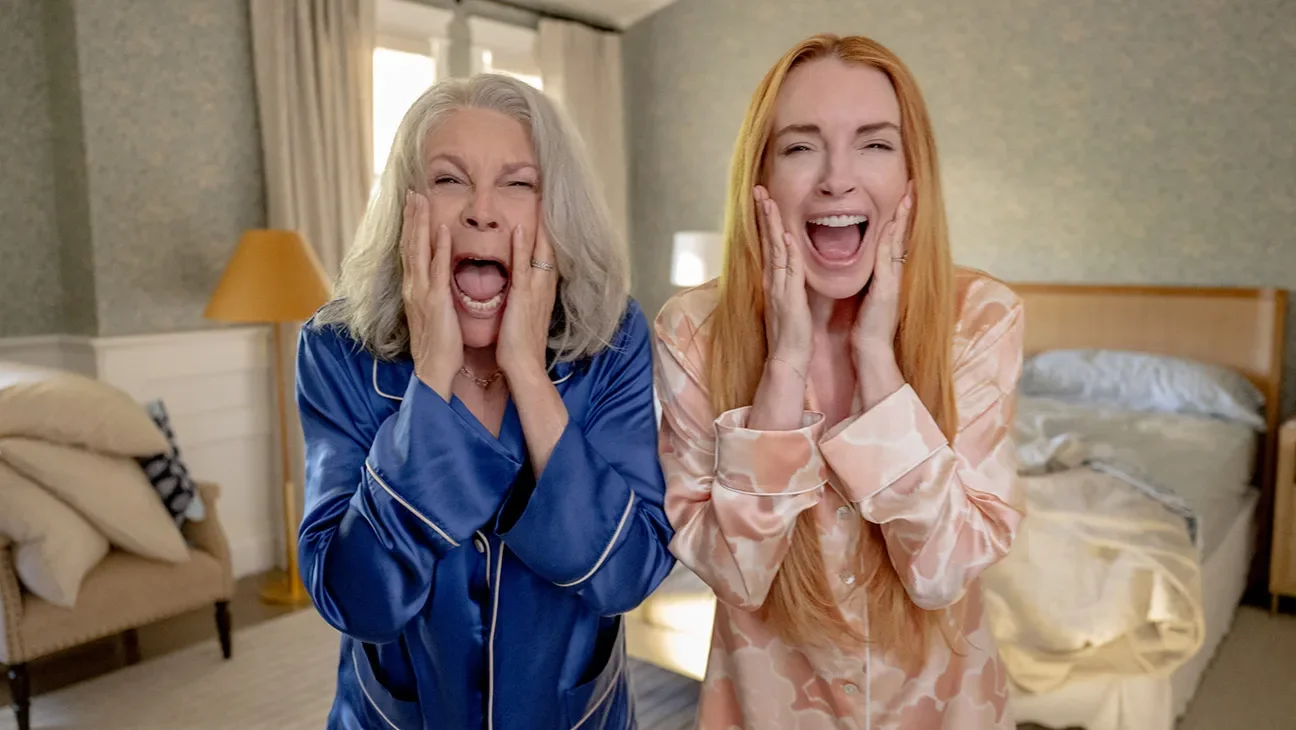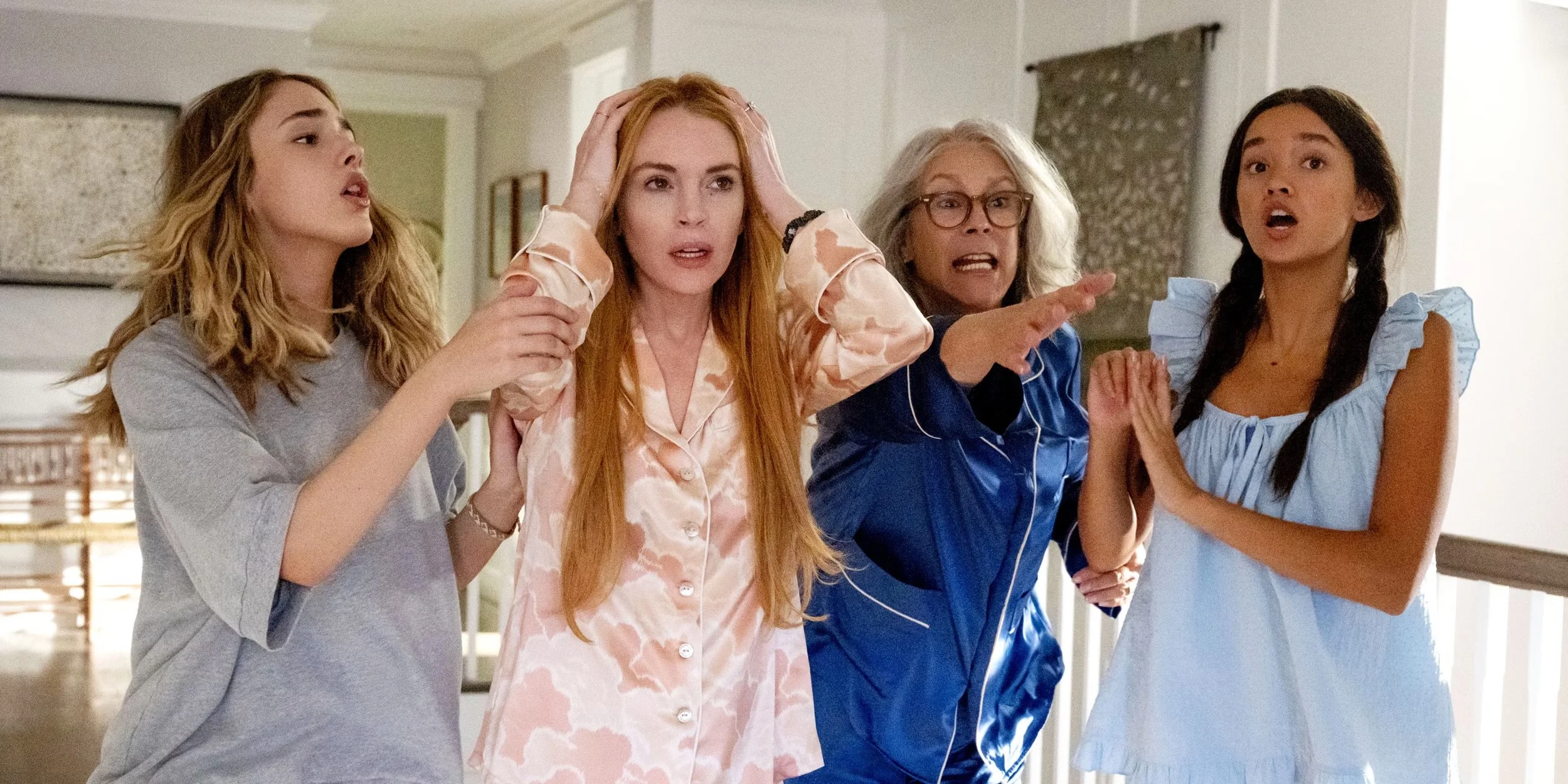'Freakier Friday' Review: Disney's Body-Swap Sequel Fumbles Nostalgia and Comic Timing
Disney
Jamie Lee Curtis and Lindsay Lohan return in a chaotic, overstuffed sequel that tries to recapture the magic of 'Freaky Friday'—but swaps heart and humor for noise and confusion.
The subgenre of body-swap comedies is as well-worn as it is beloved. From 'Heaven Can Wait' to 'All of Me,' 'Big' to 'Vice Versa,' there’s long been an enduring fascination with what happens when characters trade identities. Disney’s 'Freaky Friday' (2003), starring Jamie Lee Curtis and Lindsay Lohan, proved to be one of the genre’s standouts—an energetic remake with whip-smart writing, deeply funny performances, and genuine emotional weight. Unfortunately, its long-awaited sequel, 'Freakier Friday,' directed by Nisha Ganatra and written by Jordan Weiss, fumbles nearly every opportunity to build on that legacy.
The film, which premiered on August 8, picks up two decades after the events of the original. Lohan’s Anna Coleman is now a music manager and single mom to her teenage daughter Harper (Julia Butters), while Curtis’ Tess remains a tightly wound therapist. The twist this time? Not one but two generations experience the body-swap dilemma, doubling the confusion and unfortunately halving the impact. What begins as an attempt to build on the heartwarming intergenerational tensions of its predecessor turns into an overstuffed carousel of plot threads that rarely gel.
Instead of capturing the tightly focused mother-daughter tension that made the original a standout, 'Freakier Friday' trades in bloated subplots and screeching performances. Anna is engaged to a charming British restaurateur (Manny Jacinto), whose own teenage daughter Lily (Sophia Hammons) clashes immediately with Harper. Through a series of eye-roll-worthy plot contrivances—including a visit to a second-rate psychic played by Vanessa Bayer—both mother-daughter duos end up switching bodies. Cue the expected confusion, forced hijinks, and heavy-handed life lessons. But this time around, those ingredients feel stale, lacking the wit and cohesion that made the 2003 version work.
While the setup mimics the 2003 film’s narrative beats, the tone feels notably more chaotic. Much of that stems from Curtis, who dials her performance up to 11, often feeling more like a sketch character than a grounded comedic foil. Gone is the subtle mix of exasperation and empathy she brought to Tess; in its place is an over-the-top caricature, shrieking her way through scenes that should carry emotional resonance. Her comedic instincts remain strong, but they’re undermined by the film’s jittery pacing and over-reliance on slapstick. It’s as if the script forgets that comedy works best when it’s grounded in reality.
Lohan fares better. There’s something genuinely poignant about seeing her return to one of her most iconic roles—especially one that helped define her early stardom. But even she can’t salvage a screenplay that seems unsure of what it wants Anna to be. Her subplot—managing a pop star (Maitreyi Ramakrishnan) on the verge of a breakdown—feels disconnected from the main emotional throughline. It's merely a convoluted excuse to stage a splashy, nostalgia-baiting Pink Slip concert finale that’s more spectacle than substance. While Lohan still carries charm and presence, the script gives her too little to work with.
The teenage leads bring much-needed energy and nuance. Butters, already a breakout in Quentin Tarantino’s 'Once Upon a Time in Hollywood,' brings wit and emotional intelligence to Harper, while Hammons provides an equally compelling foil as Lily. Their dynamic is one of the few elements that feels emotionally grounded, especially as the two girls begin to understand each other through their swapped perspectives. Still, their storyline is weighed down by predictable teenage rebellion clichés and a strange over-reliance on scenes that feel better suited for Disney Channel filler than a theatrical release.
Supporting characters are largely underwritten or awkwardly shoehorned in. Rosalind Chao and Lucille Soong return briefly but are given little to do. Chad Michael Murray’s appearance as Jake, Anna’s long-ago high school flame, borders on fan-service parody—his subplot offering no real narrative payoff besides an uncomfortable rekindling with Curtis’ Tess. Meanwhile, scenes involving immigration interviews, wild driving montages, and fashion school auditions feel like stitched-together vignettes rather than coherent parts of a story. Disney is no stranger to nostalgia, but the way these cameos are dropped in without meaningful integration feels more like a marketing decision than a storytelling one.
Ganatra, who previously helmed 'Late Night,' brings a slick directorial eye, but even she can’t mask the uneven tone and disjointed pacing. Many scenes play like extended sketches or awkward montages, lacking rhythm or escalation. Rather than spiraling into comic chaos, the film repeatedly resets itself—robbing the story of momentum and making it difficult to invest in the emotional stakes. The result is a movie that feels like it’s constantly starting over, never building tension or payoff.
Costuming and production design try to inject visual interest, but instead descend into absurdity. A pop-star photoshoot scene featuring Lohan’s character dressed as a giant strawberry is a comedic low point, not just for its lack of plausibility but because it feels like a joke in search of a punchline. Elsewhere, characters cycle through wardrobe changes seemingly designed for TikTok reels, not storytelling. Scenes are loud, colorful, and fast—but rarely funny or insightful.
If the first film was about learning to walk in someone else’s shoes—both literally and metaphorically—'Freakier Friday' feels more like playing dress-up. The emotional arcs are rushed and underdeveloped, and when the characters finally reach the expected moment of epiphany, it lands with a thud rather than a catharsis. That might be the most disappointing part: the sense that something that once felt genuinely heartfelt has now been engineered to feel "relatable" in the most superficial ways.
That’s not to say the film is without any redeeming moments. Jacinto brings warmth and sincerity to his role as the would-be stepfather, while Ramakrishnan has a few sharp comedic beats. And there’s genuine joy in watching Lohan and Curtis share the screen again, even if they’re working with a far weaker script. But the film rarely slows down long enough to let its characters feel real. Instead, it keeps pushing toward its next wacky scenario, hoping the sheer volume of antics will cover up the lack of emotional coherence.
POPULAR ON THE CINEMA GROUP
Ultimately, 'Freakier Friday' is a case study in diminishing returns. It tries to expand the original’s premise with more characters, more swaps, and more chaos, but ends up diluting what made the first film work: clear stakes, smart writing, and heartfelt performances. In chasing nostalgia, it forgets the importance of restraint—and the value of letting its characters breathe. As someone who grew up with the original, this one stings more than it should. It had its moments, and maybe Disney will find a way to squeeze even more out of the concept—but this feels like a franchise running on fumes.
If this is Disney’s way of testing the waters for a 'Freakiest Friday,' they may want to go back to the drawing board. Sometimes, less really is more.






















